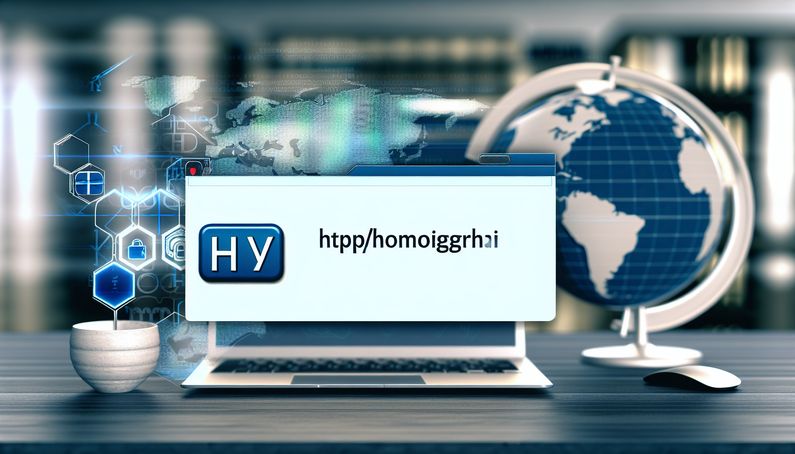
The Evolving Threat of Phishing: Insights from the Booking.com Campaign
The Booking.com phishing campaign is a striking example of how cybercriminals exploit linguistic nuances to deceive users. By replacing the Latin ‘n’ with the Japanese hiragana character ‘ん’, attackers create URLs that appear legitimate at a glance. This tactic, known as a homograph attack, is part of a broader trend where visually similar characters from different scripts are used to mimic legitimate URLs. Such attacks have been a concern since the early 2000s with the advent of Internationalized Domain Names (IDNs) (Symantec). The travel and hospitality industry, with its reliance on digital transactions, is particularly vulnerable to these sophisticated phishing tactics (World Travel & Tourism Council).
Broader Context and Related Campaigns
Phishing Tactics and Techniques
Phishing campaigns have evolved significantly over the years, utilizing various tactics to deceive users and exploit vulnerabilities. One such tactic is the use of homograph attacks, where visually similar characters are used to mimic legitimate URLs. In the case of the Booking.com phishing campaign, the ‘ん’ character, which is a Japanese hiragana character, is used to replace the Latin ‘n’ in URLs. This subtle change can easily go unnoticed by users, leading them to believe they are visiting a legitimate website. Such tactics are part of a broader trend in phishing campaigns that exploit character similarities across different languages and scripts (Symantec).
Historical Context of Homograph Attacks
Homograph attacks have been a known issue since the early 2000s, with the introduction of Internationalized Domain Names (IDNs). These attacks exploit the visual similarities between characters from different alphabets, such as Cyrillic, Greek, and Latin, to create deceptive URLs. The Booking.com phishing campaign is a continuation of this trend, highlighting the ongoing challenges in securing domain names and the need for increased awareness among users. The first documented homograph attack occurred in 2001, and since then, various security measures have been implemented to mitigate these threats, including browser updates and domain registration policies (ICANN).
Impact on the Travel and Hospitality Industry
Phishing campaigns targeting the travel and hospitality industry, such as the Booking.com campaign, have significant implications. The industry is particularly vulnerable due to the high volume of online transactions and the reliance on digital communication. According to a report by the World Travel & Tourism Council, the travel industry accounted for 10.4% of global GDP in 2019, making it an attractive target for cybercriminals. Phishing attacks can lead to financial losses, reputational damage, and loss of customer trust. The Booking.com campaign is a stark reminder of the need for robust cybersecurity measures and user education in this sector.
Related Phishing Campaigns
The Booking.com phishing campaign is not an isolated incident; it is part of a larger pattern of attacks targeting various industries. Similar campaigns have been observed targeting financial institutions, e-commerce platforms, and social media networks. For instance, a phishing campaign targeting PayPal users was reported in 2023, using similar tactics of URL manipulation and social engineering to steal user credentials (Kaspersky). These campaigns often share common characteristics, such as the use of fake login pages, urgent messages to prompt user action, and the exploitation of current events or popular brands.
Mitigation Strategies and Industry Response
In response to the increasing threat of phishing campaigns, industries and organizations have implemented various mitigation strategies. These include the use of multi-factor authentication (MFA), email filtering, and user education programs. The travel and hospitality industry, in particular, has been proactive in adopting these measures to protect their customers. For example, Booking.com has implemented security features such as two-step verification and regular security audits to safeguard user data (Booking.com). Additionally, industry collaborations, such as the Cybersecurity Tech Accord, aim to enhance information sharing and develop best practices for combating phishing attacks (Cybersecurity Tech Accord).
Role of Artificial Intelligence in Phishing Detection
Artificial Intelligence (AI) plays a crucial role in detecting and preventing phishing attacks. AI algorithms can analyze vast amounts of data to identify patterns and anomalies indicative of phishing activities. Machine learning models are used to detect suspicious URLs, email content, and user behavior, enabling real-time threat detection and response. According to a report by Gartner, AI-driven security solutions are expected to become a standard component of cybersecurity strategies by 2025. The integration of AI in phishing detection systems enhances the ability to identify and mitigate threats before they can cause harm.
User Education and Awareness Programs
User education is a critical component of phishing prevention. Organizations are increasingly investing in awareness programs to educate users about the risks of phishing and how to recognize potential threats. These programs often include training sessions, simulated phishing exercises, and informational resources. A study by Proofpoint found that organizations with comprehensive user education programs experienced a 70% reduction in successful phishing attacks. By empowering users with knowledge and tools to identify phishing attempts, organizations can significantly reduce their vulnerability to these threats.
Regulatory Frameworks and Compliance
Regulatory frameworks play a vital role in shaping the cybersecurity landscape and ensuring compliance with best practices. Regulations such as the General Data Protection Regulation (GDPR) and the California Consumer Privacy Act (CCPA) mandate strict data protection measures and impose penalties for non-compliance. These regulations have prompted organizations to enhance their security protocols and adopt measures to prevent phishing attacks. The travel and hospitality industry, in particular, must adhere to these regulations to protect customer data and avoid legal repercussions (European Commission).
Future Trends and Challenges
As phishing tactics continue to evolve, organizations must stay ahead of emerging trends and challenges. The increasing use of mobile devices and the Internet of Things (IoT) presents new opportunities for cybercriminals to exploit vulnerabilities. Additionally, the rise of deepfake technology poses a significant threat, as it can be used to create convincing impersonations and deceive users. Organizations must remain vigilant and adapt their security strategies to address these evolving threats. According to a report by McAfee, the global cost of cybercrime is expected to reach $10.5 trillion annually by 2025, underscoring the need for continued investment in cybersecurity.
Collaboration and Information Sharing
Collaboration and information sharing are essential components of an effective cybersecurity strategy. Industry partnerships and alliances, such as the Cyber Threat Alliance and the Global Cyber Alliance, facilitate the exchange of threat intelligence and best practices. By working together, organizations can enhance their ability to detect and respond to phishing attacks. The travel and hospitality industry, in particular, benefits from collaboration with law enforcement agencies, cybersecurity firms, and industry associations to combat phishing threats and protect customer data (Cyber Threat Alliance).
Final Thoughts
The ongoing evolution of phishing tactics, such as the use of homograph attacks in the Booking.com campaign, underscores the need for robust cybersecurity measures and user education. Industries must adopt comprehensive strategies, including multi-factor authentication and AI-driven detection systems, to combat these threats. Collaboration and information sharing among organizations are crucial to enhancing threat detection and response capabilities (Cybersecurity Tech Accord). As cybercriminals continue to innovate, staying informed and vigilant is essential to protect against the growing threat of phishing attacks (McAfee).
References
- Symantec. (n.d.). Threat intelligence blog. https://www.symantec.com/blogs/threat-intelligence
- ICANN. (2012). Internationalized Domain Names. https://www.icann.org/resources/pages/idn-2012-02-25-en
- World Travel & Tourism Council. (n.d.). Research insights. https://wttc.org/Research/Insights
- Kaspersky. (n.d.). Blog. https://www.kaspersky.com/blog
- Booking.com. (n.d.). Security. https://www.booking.com/security.html
- Cybersecurity Tech Accord. (n.d.). https://cybertechaccord.org/
- Gartner. (n.d.). Press releases. https://www.gartner.com/en/newsroom/press-releases
- Proofpoint. (n.d.). Resources. https://www.proofpoint.com/us/resources
- European Commission. (n.d.). Data protection. https://ec.europa.eu/info/law/law-topic/data-protection_en
- McAfee. (n.d.). Security awareness. https://www.mcafee.com/enterprise/en-us/security-awareness.html
- Cyber Threat Alliance. (n.d.). https://www.cyberthreatalliance.org/)



